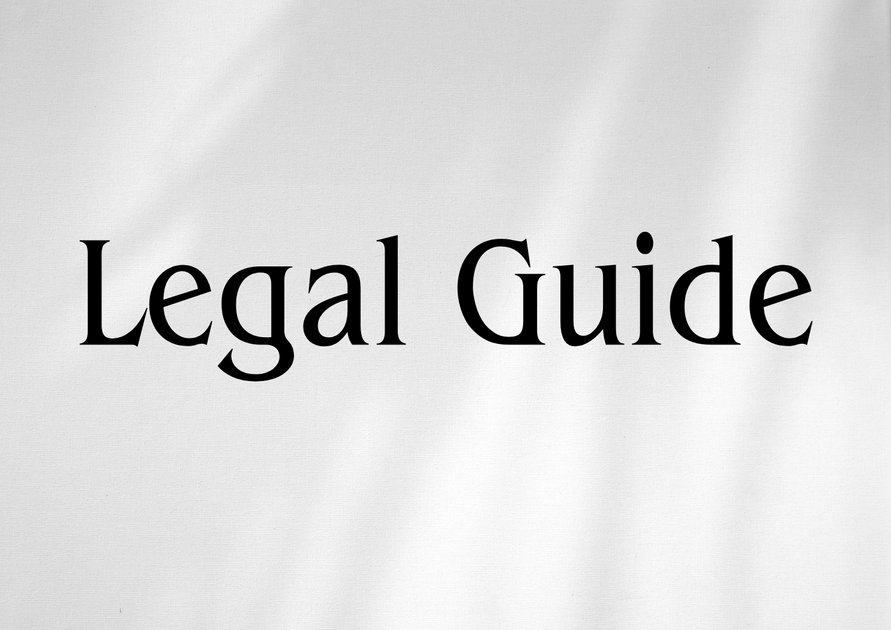Introduction: The Strategic Role of DIFC Courts in the UAE’s Modern Legal Environment
The Dubai International Financial Centre (DIFC) Courts stand at the intersection of international best practice and the UAE’s dynamic commercial legal framework. Since their establishment by Dubai Law No. 12 of 2004, DIFC Courts have been a focal point for innovation, impartiality, and judicial efficiency, underpinning Dubai’s vision as a premier global financial hub. Recent updates, including governance reforms and the adoption of international standards, have further enhanced their significance. Understanding the jurisdiction, structure, and procedures of DIFC Courts is essential for businesses, executives, HR managers, and legal professionals who wish to optimize legal strategy, manage risk, and ensure compliance with UAE’s evolving federal and local regulations.
In this comprehensive analysis, we examine the foundations, practical applications, and recent updates concerning DIFC Courts. Drawing on official sources such as UAE Ministry of Justice, the Federal Legal Gazette, and government portals, this advisory is tailored to provide actionable insights and sound legal recommendations. Whether your organization regularly contracts with DIFC entities, resolves disputes in UAE free zones, or is planning cross-border expansion, mastery of DIFC Court procedure is now non-negotiable.
Table of Contents
- Overview of DIFC Courts: Mandate and Evolution
- Jurisdictional Framework: Distinctive Features and Scope
- Institutional Structure: Hierarchy and Key Divisions
- Procedural Landscape: A Stepwise Analysis
- Comparison: DIFC Courts vs. Onshore UAE Courts
- Case Studies: Practical Scenarios and Implications
- Risks, Penalties, and Compliance Strategies
- Future Outlook: Strategic Recommendations for 2025 and Beyond
Overview of DIFC Courts: Mandate and Evolution
Legal Foundation and Mandate
DIFC Courts were created under Dubai Law No. 12 of 2004 and further strengthened by Dubai Law No. 16 of 2011. The Courts were established to provide an English-language, common law judicial system broadly consistent with international business norms. The rationale: support Dubai’s role as a competitive, globally respected financial centre, offering legal certainty and swift dispute resolution upon which investors and multinational corporations can rely.
Evolution and Recent Reforms
Recent years have witnessed key updates. These include strengthened Memorandums of Understanding with other international courts, expanded digital services, and procedural amendments in line with global best practices. Notably, in 2023, the introduction of streamlined e-filing procedures and remote hearings reflected the UAE’s post-pandemic digital transformation strategy. These measures, authorized by the DIFC Courts Rules (RDC) and linked to Dubai’s Smart Government initiative, aim to bolster accessibility, efficiency, and transparency.
Strategic Importance in the UAE Legal Ecosystem
Unlike mainland UAE courts (which operate under federal laws and the Arabic language), the DIFC Courts offer common law proceedings, experienced international judges, and a judgment enforcement framework recognized by numerous jurisdictions worldwide. These features make the DIFC Courts a preferred venue for complex commercial, financial, and employment disputes, especially for international investors and cross-border contracts.
Jurisdictional Framework: Distinctive Features and Scope
Scope of Jurisdiction: Statutory Provisions
The jurisdiction of DIFC Courts is delineated by Article 5(A) of Dubai Law No. 12 of 2004 (as amended by Dubai Law No. 16 of 2011). The Courts possess:
- Exclusive Jurisdiction over civil and commercial disputes arising within the DIFC (including employment, real estate, and company law matters governed by DIFC legislation).
- Non-Exclusive (Opt-In) Jurisdiction for parties who contractually agree to resolve their disputes in the DIFC Courts, even if their business or legal relationship exists outside the geographical confines of the DIFC.
Direct and Opt-In Jurisdiction – Comparative Table
| Type | Legal Source | Requirements | Geographical Scope | Implications |
|---|---|---|---|---|
| Exclusive | Art. 5(A)(1), Law No. 12/2004 | Disputes arise within DIFC |
Within DIFC entities/businesses | Automatic jurisdiction of DIFC Courts |
| Opt-In | Art. 5(A)(2), Law No. 16/2011 | Prior written agreement (jurisdiction clause) |
Can be outside DIFC or Dubai | Parties can choose DIFC Courts forum |
Practical Insight: Choosing the Correct Forum
For UAE-based businesses with international exposure, correctly identifying jurisdiction is critical to enforceability. Where parties seek neutrality, English-language proceedings, or a certain legal framework, an opt-in DIFC jurisdiction clause can offer strategic advantage over onshore litigation. Equally, failure to assess jurisdictional issues before contract execution can result in costly jurisdictional challenges and enforcement problems, especially in multi-jurisdictional disputes. Consulting legal professionals at the contract stage is essential to avoid such pitfalls.
Impact of Recent Updates
In alignment with UAE’s push to increase foreign investment and cross-border trade, the DIFC Law Update 2024 clarified the scope of opt-in jurisdiction, reaffirming the enforceability of DIFC judgments across Dubai and in most global financial centres through formal protocols. It is recommended to always review the current jurisdictional status prior to drafting dispute resolution clauses in your contracts.
Institutional Structure: Hierarchy and Key Divisions
DIFC Courts Hierarchy Explained
DIFC Courts feature a streamlined, three-tier hierarchy that mirrors international common law court systems and ensures accessible, predictable dispute resolution:
- Court of First Instance (CFI): Handles all original civil and commercial matters, including employment and contract claims. The CFI comprises international judges with extensive commercial law experience.
- Court of Appeal (CA): Hears appeals from CFI decisions and ensures uniform application of law within DIFC. Composed of distinguished appeal judges.
- Small Claims Tribunal (SCT): Provides expedited, low-cost resolution for smaller, less complex disputes (e.g., claims below AED 500,000 or employment cases under AED 200,000). Designed for speed, informality, and direct access (parties may represent themselves).
Supplementary Divisions
Additional divisions include the Technology and Construction Division (TCD), which resolves technically intricate matters, and the Will Registry, offering unique common law succession planning. These structures are designed to accommodate sector-specific needs, enhance judicial expertise, and promote public confidence.
Leadership and Independence
DIFC Courts benefit from a globally respected judiciary, with judges appointed by Dubai’s Ruler, drawn from leading international common law jurisdictions. The administrative independence of the Courts is protected under the founding Laws and reinforced by support from the Judicial Authority and the DIFC Authority.
Procedural Landscape: A Stepwise Analysis
Court Rules and Procedural Innovations
The DIFC Courts Rules (RDC) are closely modeled on the English Civil Procedure Rules, providing clarity, predictability, and flexibility. Key procedural features include:
- English as the language of proceedings
- Robust case management systems
- Remote and hybrid hearings (post-2021 reforms)
- Electronic case filing (e-filing), reducing delays and paperwork
- Emphasis on mediation and alternative dispute resolution where appropriate
Step-by-Step Court Process
From a consultancy perspective, understanding the major procedural stages is crucial for timely and successful dispute resolution:
- Commencement of Action: Claimant files a claim form with supporting documents via DIFC Courts’ e-filing portal.
- Service and Defence: Defendant is served, typically through the e-portal or other approved methods; files defence within prescribed deadlines.
- Case Management: Early directions hearings to streamline issues, evidence, and timetables.
- Disclosure and Submissions: Mandatory exchange of witness statements, expert reports, and relevant evidence.
- Hearing: Oral or hybrid hearings; parties may cross-examine witnesses and present arguments.
- Judgment: Courts issue reasoned written judgments, enforceable under UAE and international law.
- Appeal or Enforcement: Parties may appeal to the Court of Appeal; successful parties can enforce judgments within the DIFC and internationally.
Process Flow Diagram (Visual Suggestion)
Suggested Visual: Display a flowchart showing each procedural stage from claim filing to enforcement for visual clarity and effective client briefings.
Practical Insights and Common Pitfalls
Timely compliance is essential. Missing deadlines can result in judgment in default or loss of claims. Parties without legal representation risk procedural errors; instructing specialized counsel is strongly recommended. Where appropriate, consider alternative dispute resolution mechanisms early in the process to potentially resolve matters faster and with reduced costs.
Comparison: DIFC Courts vs. Onshore UAE Courts
| Criteria | DIFC Courts | Onshore UAE Courts |
|---|---|---|
| Legal Basis | Dubai Law No. 12/2004; Common law | Federal Laws (e.g., Civil Procedures Law); Civil law |
| Language | English | Arabic |
| Jurisdiction | Within DIFC & opt-in (contractual) | Across UAE, except free zones |
| Appeals | Court of Appeal (one tier) | Multiple tiers (First Instance, Appeal, Cassation) |
| Enforcement | Within DIFC, Dubai, and globally (MOU network) | Domestic; limited international enforcement |
| Judges | International, common law experience | National, civil law background |
| Procedure | English rules, digital and oral hearings | Civil law rules, traditional (Arabic) procedures |
| ADR Availability | Extensive, mediation encouraged | Limited, mostly post-dispute |
Implications for Contract Drafting
For cross-border transactions or projects involving DIFC or international parties, specifying DIFC jurisdiction can improve the predictability and enforceability of judgments. However, businesses focusing on mainland transactions or requiring Arabic-language proceedings may prefer onshore courts. Consider a mixed approach using “dual jurisdiction” clauses and consult legal counsel for tailored drafting advice.
Case Studies: Practical Scenarios and Implications
Case Study 1: Employment Dispute in a Multinational Firm
Scenario: A UK-based professional is terminated by a DIFC-registered company and disputes her severance package.
Analysis: Because the employment contract designates DIFC Law as governing law and includes an express opt-in to DIFC Court jurisdiction, the Claimant files her claim directly before the SCT. The process is quick, transparent, and English-language judgment is issued. Both parties avoid delays common in onshore UAE courts and the judgment is enforced via the DIFC enforcement regime.
Case Study 2: Cross-Border Commercial Contract Dispute
Scenario: Two overseas companies enter into a services contract that references DIFC Courts for all disputes, even though neither maintains a physical presence in the UAE.
Analysis: By virtue of the opt-in provision (Article 5(A)(2)), DIFC Courts accept jurisdiction. The parties benefit from international procedures, appellate rights, and international enforcement protocols. This strategic drafting helps preempt enforcement barriers, making DIFC Courts attractive for non-resident parties contracting in the region.
Case Study 3: Real Estate Dispute Involving DIFC Property
Scenario: A property developer and investor dispute late delivery of a DIFC-based commercial office project.
Analysis: As the matter arises from within the DIFC, the Courts have exclusive jurisdiction per Article 5(A)(1). The parties benefit from expedited proceedings and international expertise on construction law, especially if the dispute relates to technical matters (TCD division).
Risks, Penalties, and Compliance Strategies
Common Risks of Non-Compliance
- Contractual uncertainty by failing to clarify jurisdiction—may result in unenforceable or disputed court awards.
- Procedural default, such as missing strict filing deadlines, risking summary judgment against the defaulting party.
- Failure to comply with court orders or interim injunctions may result in penalties, adverse costs, or reputational harm.
- Poor e-filing practices, incomplete documentation, or inadequate legal representation, all of which can jeopardize case outcomes.
Penalties for Non-Compliance (Reference Table)
| Non-Compliance | Potential Penalty | Source/Note |
|---|---|---|
| Missing Deadlines | Default judgment, adverse costs | DIFC RDC, Part 14-22 |
| Breach of Interim Orders | Fines, committal for contempt | DIFC RDC, Part 23 |
| Unlawful Forum Shopping | Jurisdiction challenge, wasted costs | DIFC Law No. 16/2011 |
| Failure to Enforce Judgments | Refusal of recognition, execution delays | Memoranda with Dubai Courts |
Compliance Checklist for Organizations
- Review all contracts for jurisdiction clauses; specify “DIFC Courts” if strategic
- Update internal dispute resolution policies in line with DIFC RDC
- Train staff on e-filing and digital evidence protocols
- Appoint DIFC-experienced legal counsel; do not rely on generic legal teams
- Monitor ongoing legal reforms via official DIFC resources
Suggested Visual: Downloadable “DIFC Courts Compliance Checklist” PDF for clients and HR managers.
Future Outlook: Strategic Recommendations for 2025 and Beyond
Anticipated Developments and Their Impact
As the UAE continues to harmonize its legal system with international norms, expect further expansion of DIFC Court jurisdiction and influence. Trends include increased digitization, enhanced collaboration with international courts, and broader enforcement of judgments under revised bilateral agreements. Law No. 6 of 2022 and Cabinet Resolution No. 101/2021 on Judicial Cooperation signal future reforms reinforcing DIFC’s role as a cross-border dispute hub.
Strategic Recommendations for Legal and Compliance Leaders
- Prioritize legal audits to ensure contracts properly reflect the parties’ consent to DIFC Court jurisdiction where advantageous
- Leverage digital legal platforms—take full advantage of remote hearings and electronic filing as standard operating procedures
- Monitor updates from Federal Legal Gazette and Ministry of Justice for further regulatory changes affecting DIFC
- Adopt a risk management approach to dispute resolution, including pre-dispute mediation or arbitration clauses as appropriate
Best Practice Summary
Mastery of DIFC Courts’ jurisdiction, structure and procedures is no longer optional for UAE-based businesses wishing to stay ahead of regulatory change, manage cross-border risk, and maximize commercial certainty. Continuous review, expert advice, and a proactive compliance culture will secure lasting value from the DIFC legal framework.
Conclusion: Navigating Change—Ensuring Compliance with DIFC Court Procedures
The DIFC Courts represent a model of judicial modernization within the GCC, offering unique opportunities for efficiency, certainty, and international recognition. For legal teams, C-suite executives, and HR professionals managing global workforces, the stakes in selecting, understanding, and engaging with DIFC Courts have never been higher. With ongoing reforms and new compliance requirements on the horizon for 2025 and beyond, clients and organizations are strongly advised to:
- Integrate DIFC Courts strategies into contract management and dispute resolution planning
- Invest in DIFC court literacy for in-house legal teams and commercial managers
- Engage trusted legal consulting partners to interpret and apply the latest updates rapidly and accurately
Ultimately, informed engagement with the DIFC Courts will not only reduce legal risk but enhance the competitiveness, credibility, and certainty of your business operations in the UAE and beyond.




